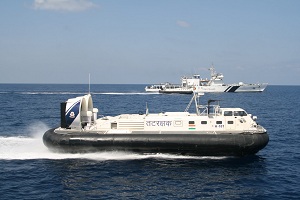The government has approved a 31,748 crore “definitive five-year action programme” for the Coast Guard, which is the defence ministry’s smallest armed force after the Army, IAF and Navy but whose role has become crucial ever since the 26/11 terror strikes in Mumbai in 2008. Sources said the action plan to bolster the force-levels of Coast Guard in terms of offshore patrol vessels, boats, helicopters, aircraft and critical operational infrastructure was cleared at a meeting chaired by defence secretary Sanjay Mitra earlier this month.
The aim is to make the Coast Guard a 175-ship and 110-aircraft force by 2022 to plug operational gaps and strengthen its capabilities to safeguard coastal security, island territories, offshore assets and marine environment as well as undertake anti-piracy, anti-smuggling, oil-spill and pollution-control operations. India has a 7,516-km coastline, with 1,382 islands and a sprawling Exclusive Economic Zone of 2.01 million sq km, which will go up to almost 3 million sq km after delimitation of the Continental Shelf.
But the Coast Guard currently has 130 “surface units” in the shape of 60 ships (offshore patrol vessels, fast patrol vessels and pollution-control vessels), 18 hovercrafts, and 52 smaller interceptor boats/crafts. The “air units”, in turn, are limited to 39 Dornier maritime surveillance aircraft, 19 Chetak choppers and four Dhruv advanced light helicopters. The action plan intends to “consolidate the progress” made by the Coast Guard, which is currently headed by Rajendra Singh as the director-general, after the 26/11 strikes punched gaping holes in the country’s coastal security architecture.
With Coast Guard also looking for six more maritime multi-mission surveillance aircraft, the force will also get five more air stations/enclaves to add to the nine such establishments already present. “The existing 42 stations (20 were sanctioned after 26/11), under the five regional headquarters at Gandhinagar, Mumbai, Chennai, Kolkata and Port Blair, will also be fully-developed and made ‘smart’ with better infrastructure,” said the source








